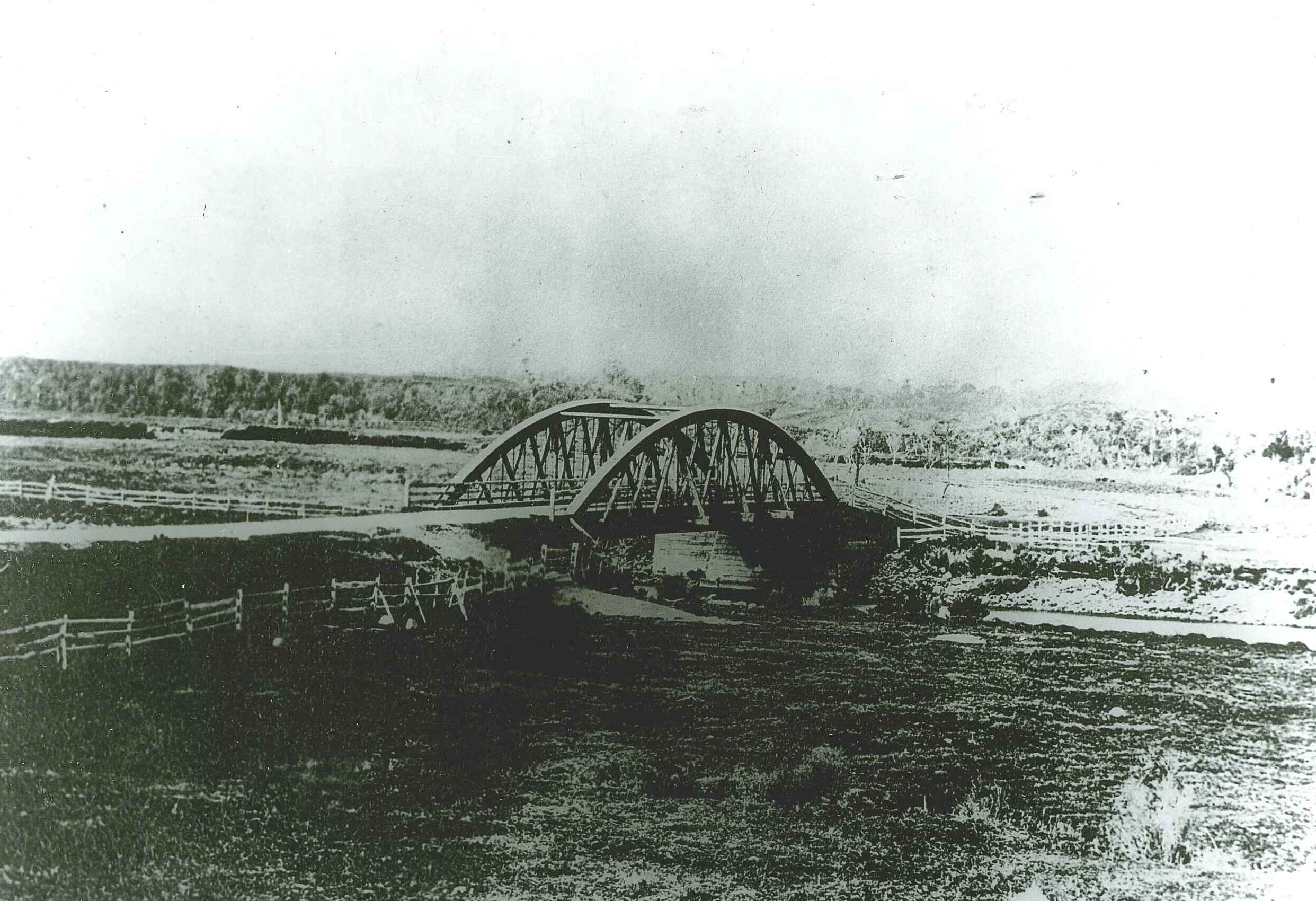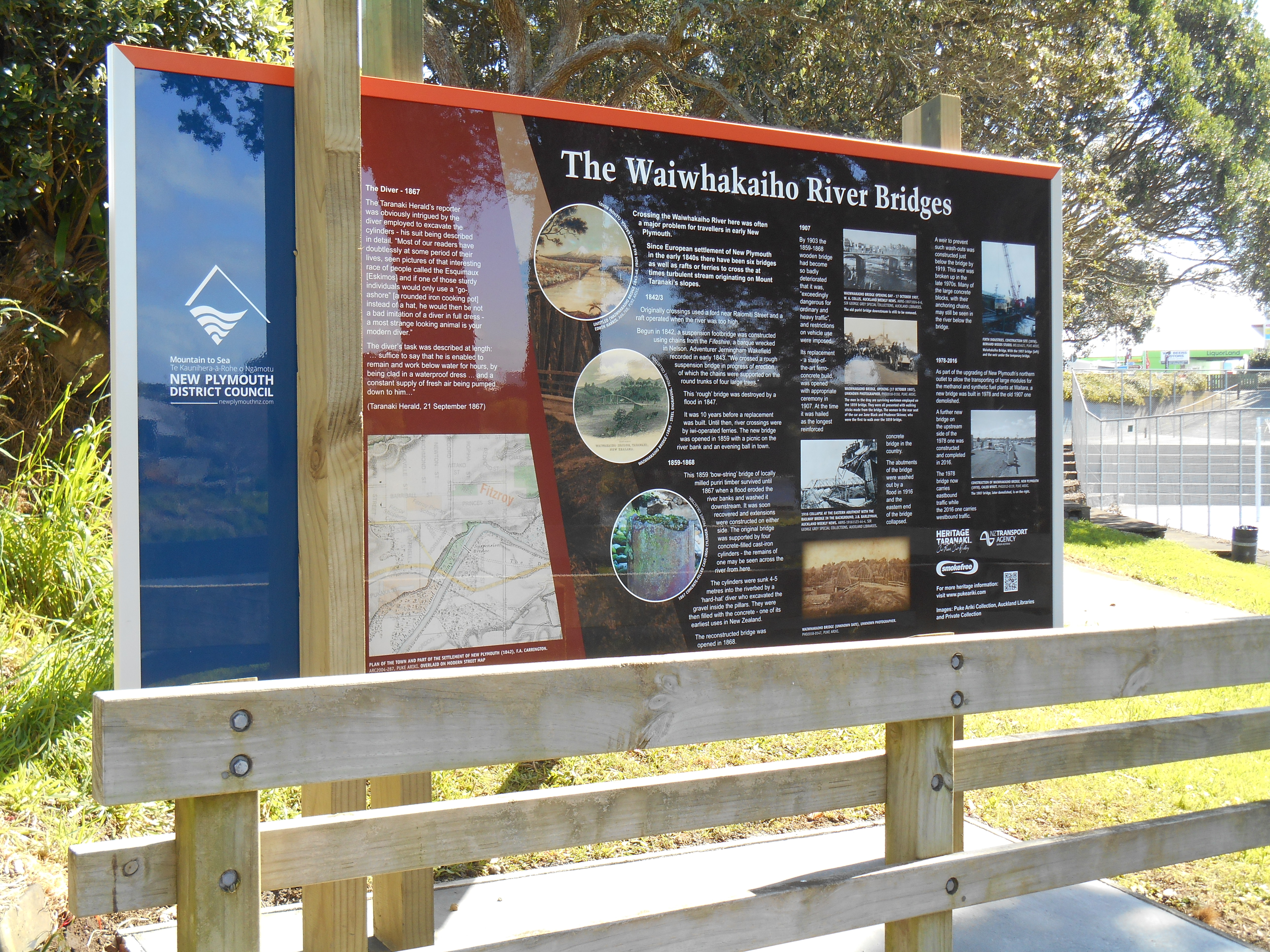











After the first bridge over the Waiwhakaiho River was washed away in 1847, it was to be 10 years before a new bridge was built.
Local legend has it that, in April 1858, a controversial design by Sapper F. Jones of the Royal Engineers - based on an Illustrated London News engraving - was agreed to by the Provincial Council, the successful tender for the build being that of John Brooking with partners, Tom Clare and Richard Rundle.
Notwithstanding its origins, the puriri bowstring arch bridge was built and opened in August 1859 with a luncheon on the banks of the river and an evening ball at the Masonic Hotel in New Plymouth.
On 11 January 1867 a flood, caused by a torrential downpour in the Waiwhakaiho headwaters, washed the bridge away and it ended up on a small island downstream. It was, later in the year, recovered and re-erected but extended with river-bank spans on each side. The recovered main arch was supported on concrete-filled iron cylinder piers. These piers have been recorded by Thornton (1996) as one of the earliest uses of concrete in New Zealand.
The four iron cylinders - 4-feet in diameter and 25 feet long - were purchased in Wellington by the Provincial Secretary, Thomas Kelly.
The remains of one of these cast-iron pillars may be seen (2015) under the bridge on the eastern bank.
The Taranaki Herald reported on the work done in the placing of, and excavating within, the four iron cylinders and then filling them with concrete.
The reporter was obviously intrigued by the diver employed to excavate the cylinders – his suit being described as like that of "....people called the Esquimaux [Eskimos] and if one of those sturdy individuals would only use a “go-ashore” [a rounded iron cooking pot] instead of a hat, he would then be not a bad imitation of a diver in full dress.”
The cylinders were sunk 4-5 metres into the riverbed by the ‘hard-hat’ diver who excavated the gravel inside the pillars then filled them with the concrete. His task was described at length - “…. suffice to say that he is enabled to remain and work below water for hours, by being clad in a waterproof dress ……and a constant supply of fresh air being pumped down to him….”
The reconstructed bridge was opened on 15 February 1868. (Taranaki Herald 15 February 1868)
In 1903 the Taranaki County Council began advertising that the bridge was "dangerous for heavy traffic." By 1907 the bridge had deteriorated alarmingly and it was then described as "exceedingly dangerous for ordinary and heavy traffic."
In 1906 it was agreed that a replacement was necessary and a ferro-concrete bridge was built and opened in 1907.
The puriri timber from the old bridge was much sought-after by local furniture makers and auctions of pieces were advertised in the local papers for several following decades.
A settee made from the timber from the bridge is held in the Puke Ariki Collection (A63.738) It belonged to Dr Hugh McCleland who was appointed to New Plymouth Hospital in 1898.
Related items:
Turbulent river destroys first Waiwhakaiho Bridges (Taranaki Daily News 8 Dec 2012)
Please do not reproduce these images without permission from Puke Ariki.
Contact us for more information or you can order images online here.